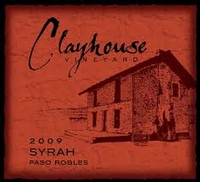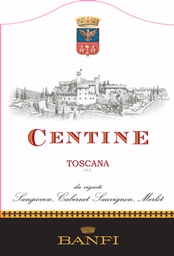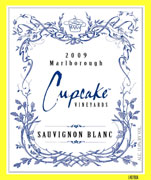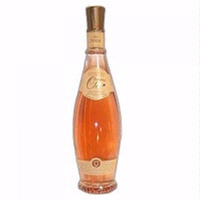|
|
 |
|
April 23, 2013
Creators Syndicate
 There is a tendency among wine drinkers to be more
forgiving in their evaluation of wines that cost less. It’s a reasonable
approach, but sometimes unnecessary. The markets are chock full of cheap wines
that deliver excellent quality along with a generous price break – no
forgiveness needed. There is a tendency among wine drinkers to be more
forgiving in their evaluation of wines that cost less. It’s a reasonable
approach, but sometimes unnecessary. The markets are chock full of cheap wines
that deliver excellent quality along with a generous price break – no
forgiveness needed.
This is especially important as we head into the
outdoor grilling season, a time when volume might seem more important than taste
as we serve up adult beverages for larger groups of friends and family. If your
idea of cheap as it relates to good wine is the $10-$15 price range, your wine
options are practically limitless.
This week I highlight three that I am
particularly fond of, but the plethora of top-notch wines that retail for $15 or
less is worthy of your own exploration. These are merely a few among the many
that have crossed my desk in recent months.
 Centine is a large brand produced by the
well-regarded Tuscan producer, Banfi. Castello Banfi helped popularize Brunello
di Montalcino globally. The care in the vineyards and cellars at Castello Banfi
extends to Banfi’s other labels, including Centine and the Banfi wines of
Chianti Classico. Centine is the bargain of the bunch, priced at $11 for any of
its three wines – Rosso, Bianco and Rose. Mary Ewing-Mulligan, the first woman
to earn the coveted Master of Wine title, is co-chief judge with me at the
annual Critics Challenge International Wine Competition. Together we taste all
of the wines awarded a platinum medal in the championship round. We were both
stunned and delighted when we tasted the $12 Centine Rosso 2010, a wine I’ve
often called a “baby” Super Tuscan. It is a blend of several indigenous and
international grape varieties grown in Tuscany. This is a well-proportioned wine
with true Tuscan character, excellent balance and supple tannins. The Critics
judges voted it Best of Show red wine. The other two Centine wines also won
medals. Centine is a large brand produced by the
well-regarded Tuscan producer, Banfi. Castello Banfi helped popularize Brunello
di Montalcino globally. The care in the vineyards and cellars at Castello Banfi
extends to Banfi’s other labels, including Centine and the Banfi wines of
Chianti Classico. Centine is the bargain of the bunch, priced at $11 for any of
its three wines – Rosso, Bianco and Rose. Mary Ewing-Mulligan, the first woman
to earn the coveted Master of Wine title, is co-chief judge with me at the
annual Critics Challenge International Wine Competition. Together we taste all
of the wines awarded a platinum medal in the championship round. We were both
stunned and delighted when we tasted the $12 Centine Rosso 2010, a wine I’ve
often called a “baby” Super Tuscan. It is a blend of several indigenous and
international grape varieties grown in Tuscany. This is a well-proportioned wine
with true Tuscan character, excellent balance and supple tannins. The Critics
judges voted it Best of Show red wine. The other two Centine wines also won
medals.
Clayhouse is located in Paso Robles, in the
Central Coast region of California, and specializes in richly flavored yet
well-balanced red wines that sing when paired with grilled meats. Its best wine
is syrah, but Clayhouse also produces delicious cabernet sauvignon, malbec and
sauvignon blanc in its “Vineyard” series (the “Estate” series is priced a bit
higher) and a red blend, white blend and rose in its “Adobe” series. In blind
tastings I find the syrah has no problem competing against wines at twice the
price.
 Cupcake Vineyards is one brand amongst a huge
cluster of brands produced by The Wine Group, one of the world’s largest wine
companies. Despite its somewhat whimsical name, Cupcake wines are serious, as in
seriously good. Cupcake wines are sourced from vineyards located in many of the
world’s top wine regions, and three that proved stellar at the recent San Diego
International Wine Competition were a Best of Class sauvignon blanc from
Marlborough, New Zealand; a Chianti DOCG from Tuscany; and a Prosecco from
northern Italy. Five other Cupcake wines won silver medals or better, and none
of the eight medal-winning wines cost more than $13.99. Cupcake Vineyards is one brand amongst a huge
cluster of brands produced by The Wine Group, one of the world’s largest wine
companies. Despite its somewhat whimsical name, Cupcake wines are serious, as in
seriously good. Cupcake wines are sourced from vineyards located in many of the
world’s top wine regions, and three that proved stellar at the recent San Diego
International Wine Competition were a Best of Class sauvignon blanc from
Marlborough, New Zealand; a Chianti DOCG from Tuscany; and a Prosecco from
northern Italy. Five other Cupcake wines won silver medals or better, and none
of the eight medal-winning wines cost more than $13.99.
Email comments to whitleyonwine@yahoo.com
and follow Robert on Twitter @wineguru.
Posted by Robert Whitley at 9:04 AM
|
|
April 12, 2013
Wine enthusiasts of a certain age will remember when a bottle of Mateus or Lancers rose — both light, slightly sweet, slightly spritzy — signaled a big night out. Truth be told, it was the uniquely shaped bottles of these two Portuguese pinks that most impressed. The wines were, and still are, easy to drink and refreshing, but hardly the best that rose can be.
 That was a long-ago, far-away time in the slow but inexorable evolution of the American wine palate. Following the intense but fleeting allure of Lancers and Mateus, we gave up on rose. We plunged into chardonnay and cabernet, and more recently have embraced pinot noir and crisp, aromatic whites such as gruner veltliner and albarino. That was a long-ago, far-away time in the slow but inexorable evolution of the American wine palate. Following the intense but fleeting allure of Lancers and Mateus, we gave up on rose. We plunged into chardonnay and cabernet, and more recently have embraced pinot noir and crisp, aromatic whites such as gruner veltliner and albarino.
But there are signs rose is on the way back. While enjoying dinner recently at a local bistro that features an eclectic mix of international and domestic wines, the proprietor noticed my glass of pink stuff. Perhaps this was a sight to behold, for he stopped to chat about an upcoming wine event he had dubbed The War of the Roses.
In the course of the conversation, he made an excellent point: Rose can be an intriguing alternative when a diner can't decide whether the dish calls for a white wine or a red wine. A case in point quickly came to mind.
I had just hosted a few friends for an evening of cataplana, a Portuguese fish stew. My recipe allows for quite a bit of flexibility, so for this cataplana I used clams, shrimp, rockfish, garlic, basil, parsley, onion, clam juice, white wine and — get this — a savory beef kielbasa.
 I opened an array of white wines and one rose: the Eberle 2011 Syrah Rose ($18). The rose, more so than the lighter white wines, had the fruit and structure to stand up to the savory aromas of the fish stew. This should come as no surprise, for the French in Provence have been serving rose with fish stew since the beginning of wine. I opened an array of white wines and one rose: the Eberle 2011 Syrah Rose ($18). The rose, more so than the lighter white wines, had the fruit and structure to stand up to the savory aromas of the fish stew. This should come as no surprise, for the French in Provence have been serving rose with fish stew since the beginning of wine.
The Europeans have long embraced rose, particularly for consumption as the weather warms and more dining is done al fresco — away from air-conditioned comfort. A warm day, a bucket of ice, a bottle of rose, and life is good.
The south of France is a hotbed for rose, especially from the areas of Tavel and Bandol. Chateau d'Aqueria Tavel Rose, one of my personal favorites, is fermented to dryness, as are most of the top French rose wines. It is a contrast in style, however, from another popular dry rose from nearby, the Domaines Ott lineup mostly sourced from the Cotes de Provence. The Ott style is light in color, higher in acidity and more mineral-driven at its core, with a crunchy freshness. D'Aqueria Tavel is deeper in color and bursting with the aroma of ripe strawberries.
Over the Pyrenees in the Navarra region of northern Spain, the dry rose is among the finest in the world and a frequent accompaniment to jamon Serrano or jamon Iberico. One of the best is from the Julian Chivite winery.
A good rule of thumb is that one size does not fit all when it comes to rose. Some are fruitier than others, and what you might like depends strictly upon personal taste preferences. Rose also comes in a wide range of sweetness levels, from dry to very sweet.
I generally prefer rose that is dry and crisp, with subdued fruit aromas. But then my mood swings and I am down with a fruity New World rose that is so bright in color it could almost pass for a red. The beauty of rose wine is that it's usually not terribly expensive, so you can experiment until you find one you like.
That is what I truly recommend.
Posted by Robert Whitley at 10:56 AM
|
|
 |
|